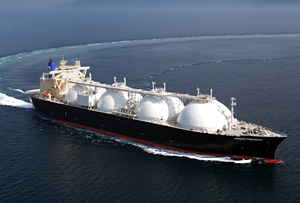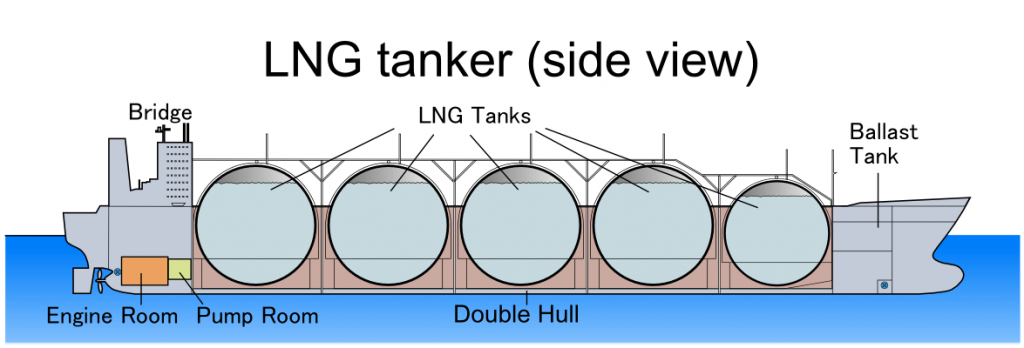Gas carriers are ships that are specially designed to transport gas. This ship type is considered to be more technically advanced than Bulker and Tankers. Most ships of this type are built at yards in Korea or Japan as they have the experience and proven track record.
to transport gas. This ship type is considered to be more technically advanced than Bulker and Tankers. Most ships of this type are built at yards in Korea or Japan as they have the experience and proven track record.
Oil price and the resent environmental debate has increased demand for LNG. Not only as source of energy for land based installation but also as fuel for ships due its environmental advantages. However there are still some challenges in infrastructure around LNG.
LNG Carrier
Is a ship that designed to transport Liquefied Natural Gas (LNG). In order to keep the natural gas liquefied the gas has to be cooled held in the tanks at -162°C. The liquefied gas is in some designs kept in sphere shaped tanks that are carefully insulated to avoid heating up and “boil-off” of the LNG. It also gives the ship a very characteristic look. No insulation is perfect and according to WGI (World Gas Intelligence), on a typical voyage an estimate of 0.1% – 0.25% of the cargo converts to gas each day, depending on the efficiency of the insulation and the roughness of the voyage. Some LNG carriers are designed to use the “boil-off” from the cargo tanks as fuel for propulsion and are equipped with dual fuel engines.
LPG Carrier
This ship type is specially designed to transport petroleum gas like propane, butane, propylene and butylene.
CNG Carrier
Is a ship that is designed to transport Compressed Natural Gas. A CNG carrier is at the time of writing still only a concept ship and no ship has been built yet. More information could be found here.